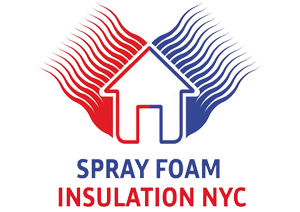Spray Foam insulation can maximize a homeowners investment by sealing the building envelope to stop conditioned indoor air from escaping and prevent unconditioned air from entering a home.
Air exchange in and out of a home is a leading cause of escalated energy bills.
The mechanical systems that heat and cool buildings are continuously operating; reducing extreme temperature variations saves on the overuse of mechanical systems and leads to lower energy bills.
What is Spray Foam Insulation
Spray Foam Insulation is a spray-applied plastic that can form a continuous insulation and air sealing barrier on walls, roofs, around corners, and on all contoured surfaces. It is made by mixing and reacting unique liquid components at the job site to create foam. The liquids react very quickly when mixed, expanding on contact to create foam that insulates, seals gaps, and can form moisture and vapor barriers. Spray Foam Insulation is known to resist heat transfer extremely well, and it offers a highly effective solution in reducing unwanted air infiltration through cracks, seams, and joints.Closed-cell spray foam exterior applications
- Can reject bulk water (ideal for flood zones)
- Higher R-value* per inch – easier to accommodate high R-value* requirements in narrow spaces
- Adds wall racking strength as well as impact resistance
- Can be applied at very low temperatures (as low as 5oF)
- Ideal for continuous insulation solutions
- Lower vapor permeance (can be a Class II VDR)
- Higher tensile and bond strength
Open-cell spray foam interior applications
- Hydrophobic material
- Permits bi-directional drying
- Can achieve greater R-value* if not restricted by space
- Can be installed at a significantly lower cost and target the same specified R-value*
- Lower raw material/resource use
- Will accommodate long-term creep and seasonal movement
- Air barrier and insulating material

